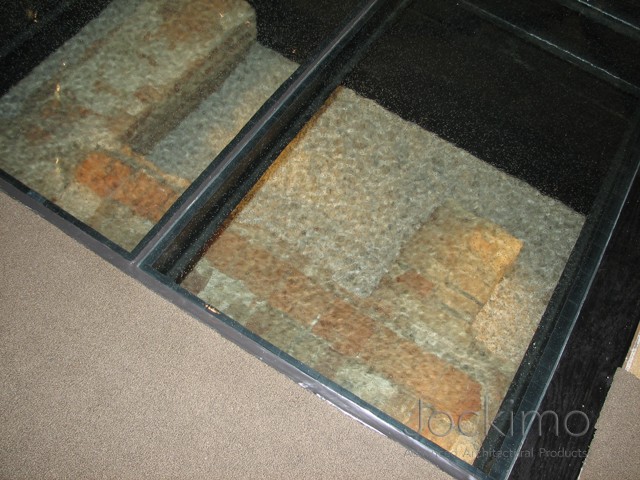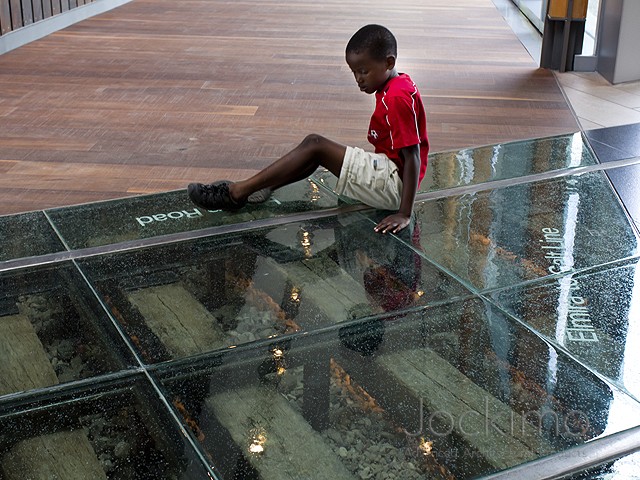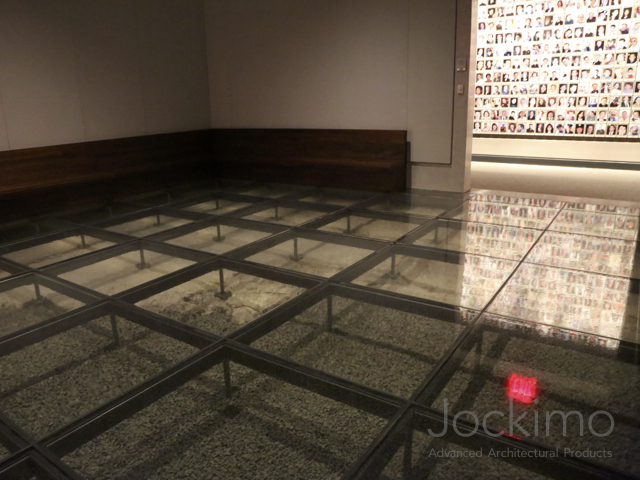- Details
How Museums Can Create a More Impactful, Interactive Design
Museums offer so much in the way of cultural and historical significance. If a museum has something subterranean to feature—think historical foundations, infrastructure, or ruins—a glass floor can be a sophisticated and effective way to showcase that element. With that in mind, here are four key reasons museums should consider glass floors.
4 Ways Glass Flooring Can Enhance a Museum
1. Offer a More Personal Experience

History can feel remote and abstract. A museum, created with thought and intention, can make that history feel more visceral and real. If there’s something of note to showcase below the floorboards, a glass floor can help a museum highlight that feature and make it feel more tangible and impactful for the visitors.
Below is an image from the Jamestown Archaearium in Jamestown, Virginia. The glass floor reveals the original foundation of the Jamestown Statehouse (1665–1698).

A fact that might otherwise just sound like a place and a date suddenly becomes more real, fascinating, and impactful because the visitor can see the structure with his or her own eyes. Glass flooring makes that possible.
2. Preserve What’s Below the Glass Flooring

Ensuring the visitors have an up-close-and-personal experience with the historical feature is important. However, ensuring the absolute safety and preservation of that feature should be the number one priority.
By covering the historical feature in glass flooring manufactured with today’s stringent safety features, architects, museum curators, and historians can all rest easy knowing that feature is safe and protected from potential damage.
In this way, glass flooring is a win for everyone. Visitors get to see what’s below the surface in a personal, close way, and the feature gets to stay pristine for generations to come.
3. Add Visual Interest to the Space

In addition to enhancing the historical significance of subterranean features, a glass floor can also play into the overall design scheme of the museum itself. Perhaps it lends the museum a sleek, modern aesthetic, or maybe the glass flooring is playful and colorful to delight and entertain children. (Jockimo’s Liquid Lava™ tiles are an ideal example.)
Whatever the intent, adding glass flooring will ensure both the content and the design of the museum are made greater.
4. Set the Museum Apart

Designed and implemented correctly, a striking glass floor can make a visitor’s experience at the museum something special and memorable. It can be the thing that prompts someone to return to the museum, to share the experience with another, to post favorably about the space online, and any other number of actions that help the museum stand out and make a positive impression.
Glass Flooring: Safety First
Any museum considering the installation of a glass floor must ensure it complies with today’s safety standards. This includes the following:
- Being manufactured with a failure redundancy.
- Complying with glass thickness standards.
- Having an anti-slip coating.
Read here to learn more about glass floors and safety considerations and read here to explore all your antislip glass options when working with Jockimo.
For more information about why glass floors are a great fit for museums, check out this article.
If you have any questions or want to discuss the new build or renovation of your museum, feel free to reach out. We’re a premier custom glass manufacturer, and we’re happy to provide whatever insight we can!

